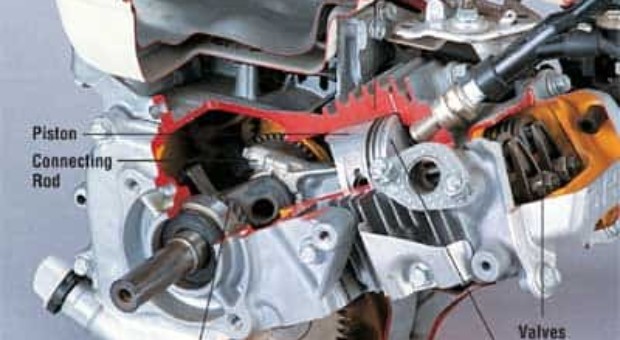
Some information about engines
An engine is a mechanical device that produces some form of output from a given input.
An engine whose purpose is to produce kinetic energy output from a fuel source is called a prime mover; alternatively, a motor is a device which produces kinetic energy from a preprocessed “fuel” (such as electricity, a flow of hydraulic fluid or compressed air). A motor car (automobile) has a starter motor and motors to drive pumps (fuel, power steering, etc) – but the power plant that propels the car is called an engine. The term ‘motor’ was originally used to distinguish the new internal combustion engine -powered vehicles from earlier vehicles powered by a steam engine (as in steam roller and motor roller).
Military engines included siege engines, large catapults, trebuchets and battering rams.
The design principles favoured in Europe, because of economic and other restraints such as smaller and twistier roads, leant toward smaller cars and corresponding design principles that concentrated on increasing the combustion efficiency of smaller engines. This produced more economical engines with earlier four-cylinder designs rated at 40 horsepower (30 kW) and six-cylinder designs rated as low as 80 horsepower (60 kW), compared with the large volume V-8 American engines with power ratings in the range from 250 to 350 hp (190 to 260 kW).
Earlier automobile engine development produced a much larger range of engines than is in common use today. Engines have ranged from 1 to 16 cylinder designs with corresponding differences in overall size, weight, piston displacement, and cylinder bores. Four cylinders and power ratings from 19 to 120 hp (14 to 90 kW) were followed in a majority of the models. Several three-cylinder, two-stroke-cycle models were built while most engines had straight or in-line cylinders. There were several V-type models and horizontally opposed two- and four-cylinder makes too. Overhead camshafts were frequently employed. The smaller engines were commonly air-cooled and located at the rear of the vehicle; compression ratios were relatively low. The 1970s and ’80s saw an increased interest in improved fuel economy which brought in a return to smaller V-6 and four-cylinder layouts, with as many as five valves per cylinder to improve efficiency. The Bugatti Veyron 16.4 operates with a W16 engine meaning that two V8 cylinder layouts are positioned next to each other to create the W shape.
Read more here

















